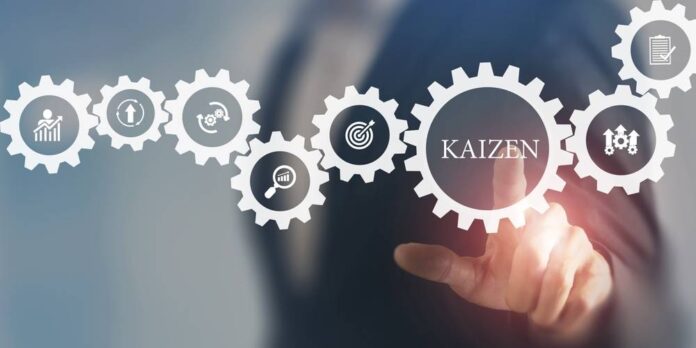Continuous improvement or kaizen certification has proven effective in driving ongoing improvement for businesses to stay relevant even in the dynamic landscape. Originating from Japan, it is a philosophy of continuous improvement that focuses on making small, incremental changes to achieve significant improvements over time. It is grounded in several principles, including maintaining a continuous improvement mindset, involving employees at all levels, data-driven decision-making, and eliminating waste.
What are the Benefits of Kaizen for a Company?
Utilising Kaizen for a company yields benefits such as:
- Enhanced Efficiency and Productivity
Kaizen continuously improves workflows, streamlines operations, and optimises resource utilisation. It enhances overall efficiency and productivity and leads to cost savings, improved output, and better usage of time and resources.
- Good Quality and Customer Satisfaction
It encourages companies to identify and address the root causes of defects or errors. This way, companies can implement small, incremental changes that ultimately improve their products or service quality. A good service and product result in increased customer satisfaction, loyalty, and a positive brand reputation.
- Reduction of Waste
It emphasises waste elimination. Waste could be in the form of overproduction, excess inventory, waiting time, unnecessary movement, and defects. Eradicating such wastes can help businesses to reduce their costs associated with excess inventory, rework, scrap, and other inefficiencies, leading to significant cost savings.
- Positive Employee Development and Engagement
Kaizen actively involves employees at all levels of the organisation in the improvement process. This engagement empowers employees to contribute their ideas, knowledge, and expertise to identify and implement modifications. It promotes a culture of continuous learning, skill development, and employee engagement that enhances overall team dynamics and yields the best output for the company.
- Improves Business Resilience
This philosophy helps companies become more adaptable and responsive to changing market conditions, customer demands, and competitive landscapes. As a result, organisations can quickly identify and implement necessary changes to stay ahead of the competition and remain relevant in the market.
- Result-Driven Communication and Collaboration
It encourages open communication, collaboration, and teamwork among employees across different departments or functions. Involving employees in problem-solving and improvement initiatives breaks down silos, improves interdepartmental cooperation, and creates a sense of shared responsibility and collective success.
How to Implement Kaizen for Continuous Improvement?
Educate and create awareness about the Kaizen philosophy and its principles among all stakeholders through workshops, training sessions, and communication channels.
Step 2
Identify the “why” behind implementing this philosophy within your organisation and the areas or processes that need refinement.
Step 3
Set specific goals that align with your overall business strategy.
For this, you must ensure all employees communicate and understand these objectives, emphasising their roles in achieving them.
Step 4
Encourage active participation and engagement from all employees to promote a culture where employees feel empowered to contribute their ideas, suggestions, and feedback for improvement.
You can use tried and tested methods like suggestion boxes, improvement boards, or digital platforms to effectively capture and evaluate employee input.
Step 5
Provide comprehensive training and development programs with the necessary knowledge and skills to support the Kaizen journey.
Here you can leverage the expertise of Kaizen consultants and their training modules that cover topics such as problem-solving methodologies, data analysis, root cause analysis, and effective teamwork.
Step 6
Form cross-functional teams comprising employees from different departments or levels within the organisation to identify improvement opportunities, analyse processes, and implement changes.
Step 7
Visual management techniques like performance dashboards, Kanban boards, or process flow charts should be used to make information and progress visible to everyone.
With visual displays, you get to promote transparency and accountability and enable quick identification of bottlenecks or areas that require attention.
Step 8
Promote the concept of small-scale improvements, known as “Kaizen events” or “Kaizen blitzes”, where teams identify and implement small, incremental changes that can be executed quickly and easily.
This approach builds momentum, demonstrates tangible results, and reinforces the habit of continuous improvement.
Step 9
Establish Key Performance Indicators (KPIs) to measure the effectiveness of your improvement initiatives by regularly monitoring and evaluating progress against these metrics, ensuring data-driven decision-making.
You can use tools like statistical process control, Pareto charts, or value stream mapping to identify trends, root causes of problems, and areas for further improvement.
Step 10
Kaizen is an ongoing process. It requires a commitment to continuous improvement. Therefore, you must encourage a mindset that actively seeks out opportunities for growth and refinement.
The regular review helps to refine your Kaizen implementation approach based on feedback, lessons learned, and evolving business needs.
Conclusion
Kaizen is a transformative journey that can yield significant benefits for your organisation. However, resistance to change, lack of management support, and insufficient lean management training can impede progress.
With the help of experienced Kaizen consultants like Shinka Management ,it is easy to implement the best continuous improvement process that suits your business needs.






